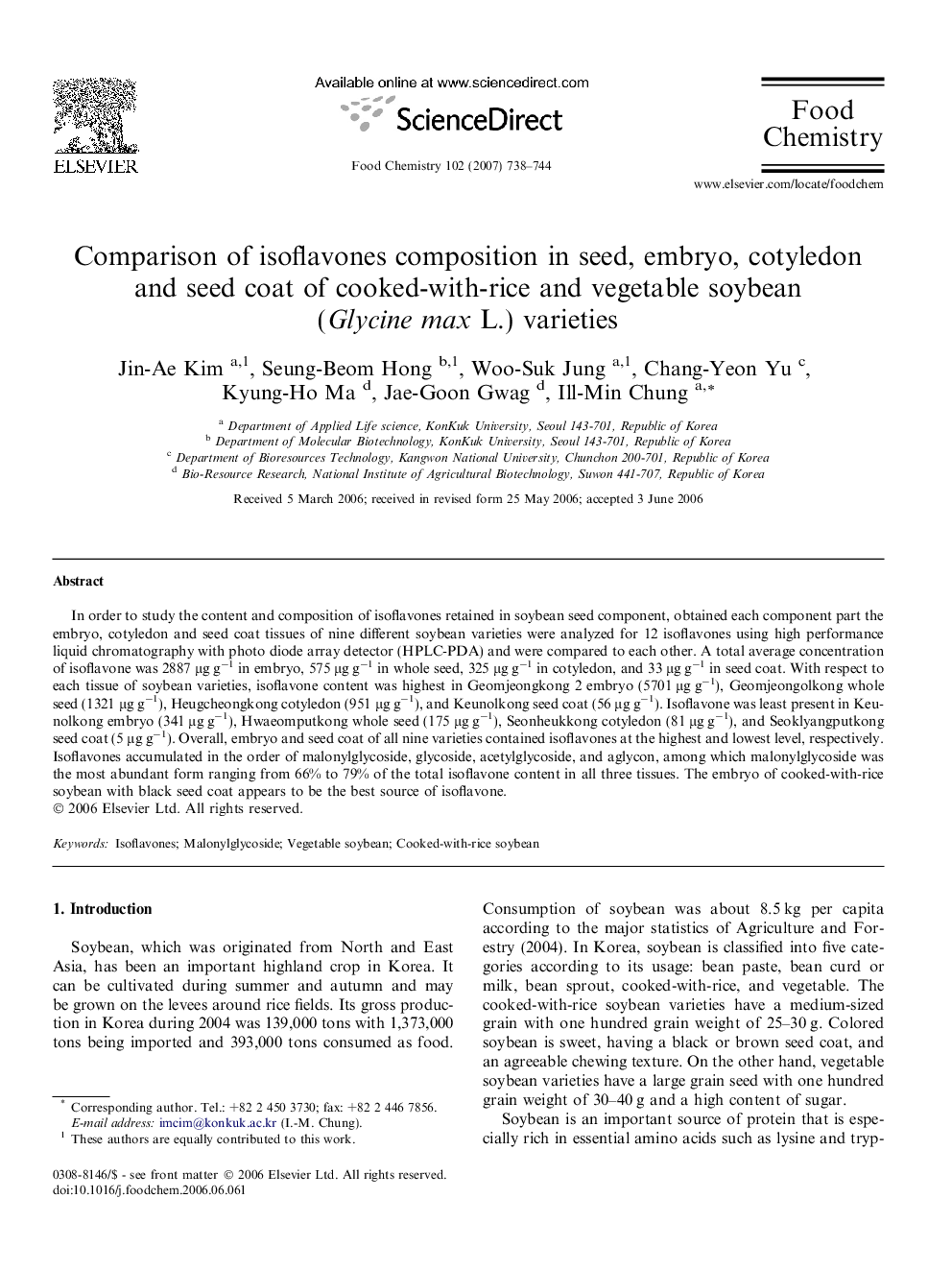| Article ID | Journal | Published Year | Pages | File Type |
|---|---|---|---|---|
| 1190048 | Food Chemistry | 2007 | 7 Pages |
In order to study the content and composition of isoflavones retained in soybean seed component, obtained each component part the embryo, cotyledon and seed coat tissues of nine different soybean varieties were analyzed for 12 isoflavones using high performance liquid chromatography with photo diode array detector (HPLC-PDA) and were compared to each other. A total average concentration of isoflavone was 2887 μg g−1 in embryo, 575 μg g−1 in whole seed, 325 μg g−1 in cotyledon, and 33 μg g−1 in seed coat. With respect to each tissue of soybean varieties, isoflavone content was highest in Geomjeongkong 2 embryo (5701 μg g−1), Geomjeongolkong whole seed (1321 μg g−1), Heugcheongkong cotyledon (951 μg g−1), and Keunolkong seed coat (56 μg g−1). Isoflavone was least present in Keunolkong embryo (341 μg g−1), Hwaeomputkong whole seed (175 μg g−1), Seonheukkong cotyledon (81 μg g−1), and Seoklyangputkong seed coat (5 μg g−1). Overall, embryo and seed coat of all nine varieties contained isoflavones at the highest and lowest level, respectively. Isoflavones accumulated in the order of malonylglycoside, glycoside, acetylglycoside, and aglycon, among which malonylglycoside was the most abundant form ranging from 66% to 79% of the total isoflavone content in all three tissues. The embryo of cooked-with-rice soybean with black seed coat appears to be the best source of isoflavone.
